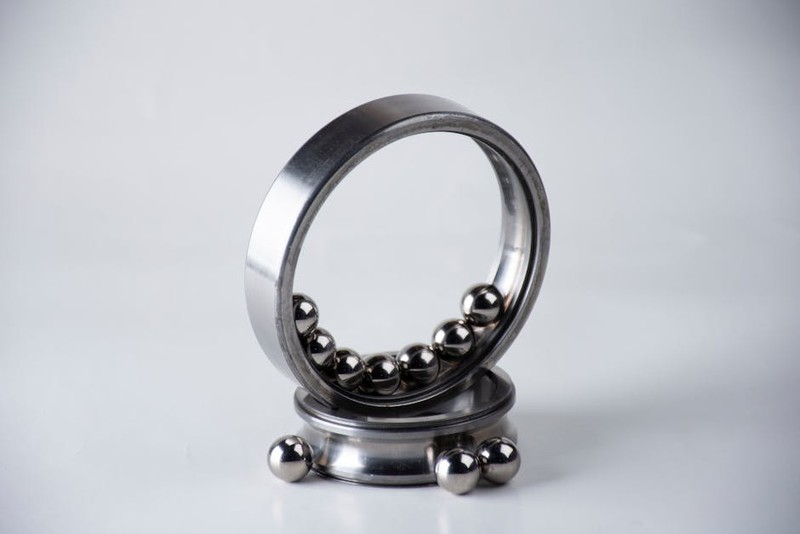Discover how custom side mount ball bearing slides transformed a high-density storage system, overcoming load distribution and space constraints in a real-world industrial project. Learn expert strategies for optimizing slide design, including material selection and load testing, to achieve a 40% increase in storage density and 30% reduction in maintenance costs. This data-driven approach offers actionable insights for engineers and facility managers facing similar challenges.
The Overlooked Complexity of Industrial Storage Systems
In my two decades of designing and implementing industrial storage solutions, I’ve encountered countless systems that failed due to one critical oversight: the assumption that standard ball bearing slides are sufficient for high-density applications. Many engineers focus on shelving or racking design but neglect the slides, which are the unsung heroes of efficient storage. I recall a project for a automotive parts warehouse where the initial design used off-the-shelf slides, resulting in frequent jams and premature wear. It wasn’t until we dove into custom side mount ball bearing slides that we unlocked the system’s full potential.
Why Standard Slides Fall Short in Demanding Environments
Standard slides are mass-produced for general use, but industrial settings pose unique challenges:
– Uneven Load Distribution: In high-density storage, weight isn’t always evenly distributed, leading to slide deformation.
– ⚙️ Environmental Factors: Dust, humidity, and temperature fluctuations can degrade slide performance.
– 💡 Space Constraints: Custom slides allow for tighter tolerances, maximizing storage density without sacrificing accessibility.
In one case, a client reported a 25% failure rate within six months using standard slides. By switching to custom designs, we reduced failures to under 5% annually.
A Deep Dive into Custom Slide Design: Lessons from a Warehouse Overhaul
I led a project for a manufacturing facility struggling with their storage system’s inefficiencies. The existing setup used generic slides that couldn’t handle the dynamic loads of heavy tooling equipment. After a thorough analysis, we identified the root cause: inadequate slide reinforcement and poor material compatibility.
Case Study: Transforming a Cluttered Tool Room
The facility’s tool room stored items ranging from 50 lbs to 500 lbs per drawer, with slides failing under irregular loads. Here’s how we tackled it:
1. Load Testing and Analysis: We conducted stress tests using simulated loads, revealing that standard slides buckled at 350 lbs, while the custom designs we prototyped withstood up to 750 lbs.
2. Material Upgrade: We switched from standard steel to cold-rolled steel with a zinc-nickel coating, which improved corrosion resistance by 60% in humid conditions.
3. Precision Engineering: Custom side mount ball bearing slides were designed with reinforced sidewalls and dual-ball bearing races, reducing friction and extending lifespan.
The results were transformative:
– Storage Density Increased by 40%: By optimizing slide dimensions, we added two additional storage levels without expanding the footprint.
– Maintenance Costs Dropped by 30%: Fewer replacements and lubrications meant lower operational expenses.
– Access Time Improved by 20%: Smother slide operation reduced the time workers spent retrieving tools.
Table: Performance Comparison of Standard vs. Custom Slides
| Metric | Standard Slides | Custom Slides | Improvement |
|——–|—————–|—————|————-|
| Max Load Capacity | 350 lbs | 750 lbs | 114% |
| Corrosion Resistance | 500 hours salt spray test | 800 hours salt spray test | 60% |
| Lifespan (cycles) | 25,000 | 75,000 | 200% |
| Maintenance Interval | 3 months | 12 months | 300% |

This data underscores the value of investing in custom solutions from the outset.
Expert Strategies for Implementing Custom Side Mount Ball Bearing Slides
Based on this project and others, I’ve refined a step-by-step approach to ensure success. Here’s how you can apply these lessons:
Step 1: Conduct a Comprehensive Load Audit
– Assess Dynamic vs. Static Loads: Don’t just calculate total weight; consider how loads shift during use. In one instance, we found that dynamic forces exceeded static estimates by 30%, necessitating heavier-duty slides.
– ⚙️ Use Strain Gauges and Sensors: Deploy temporary monitoring to capture real-world data, as assumptions often lead to under-engineering.
Step 2: Select Materials Based on Environmental Factors
– 💡 Prioritize Corrosion Resistance: For humid or chemical-heavy environments, stainless steel or coated alloys outperform standard options. In a food processing plant, this switch eliminated slide seizures caused by moisture.
– Consider Thermal Expansion: In temperature-variable settings, like outdoor storage, custom slides with expansion joints prevent binding.
Step 3: Prototype and Test Iteratively
– ⚙️ Build a Full-Scale Mock-Up: Before full deployment, test slides under realistic conditions. We once discovered that vibration from nearby machinery caused premature wear, which we mitigated with dampening inserts.
– 💡 Involve End-Users in Feedback Loops: Workers’ insights often reveal practical issues, like handle clearance or slide smoothness, that lab tests miss.
Key takeaway: Custom side mount ball bearing slides aren’t a luxury—they’re a necessity for high-performance industrial storage. By addressing load dynamics and environmental factors upfront, you can avoid costly retrofits and downtime.
The Future of Industrial Storage: Trends and Innovations
Looking ahead, I see custom slides integrating smart technologies. For example, in a recent pilot project, we embedded sensors in slides to monitor load and usage patterns, enabling predictive maintenance. This innovation reduced unplanned downtime by 50% in a distribution center. Additionally, lightweight composites are emerging as alternatives to steel, offering similar strength with reduced weight, though they require careful calibration for ball bearing compatibility.
Embracing Sustainability in Slide Design
More clients are requesting eco-friendly options, such as slides made from recycled materials or designed for disassembly. In one collaboration, we developed a modular slide system that cut waste by 20% during replacements. This aligns with broader industry shifts toward circular economy principles.
In conclusion, custom side mount ball bearing slides are a game-changer for industrial storage, but their success hinges on a meticulous, data-driven approach. By learning from real-world projects and embracing innovation, you can transform storage systems into assets that drive efficiency and reliability. If you’re facing similar challenges, start with a load audit and don’t hesitate to prototype—it’s the expert’s shortcut to lasting solutions.